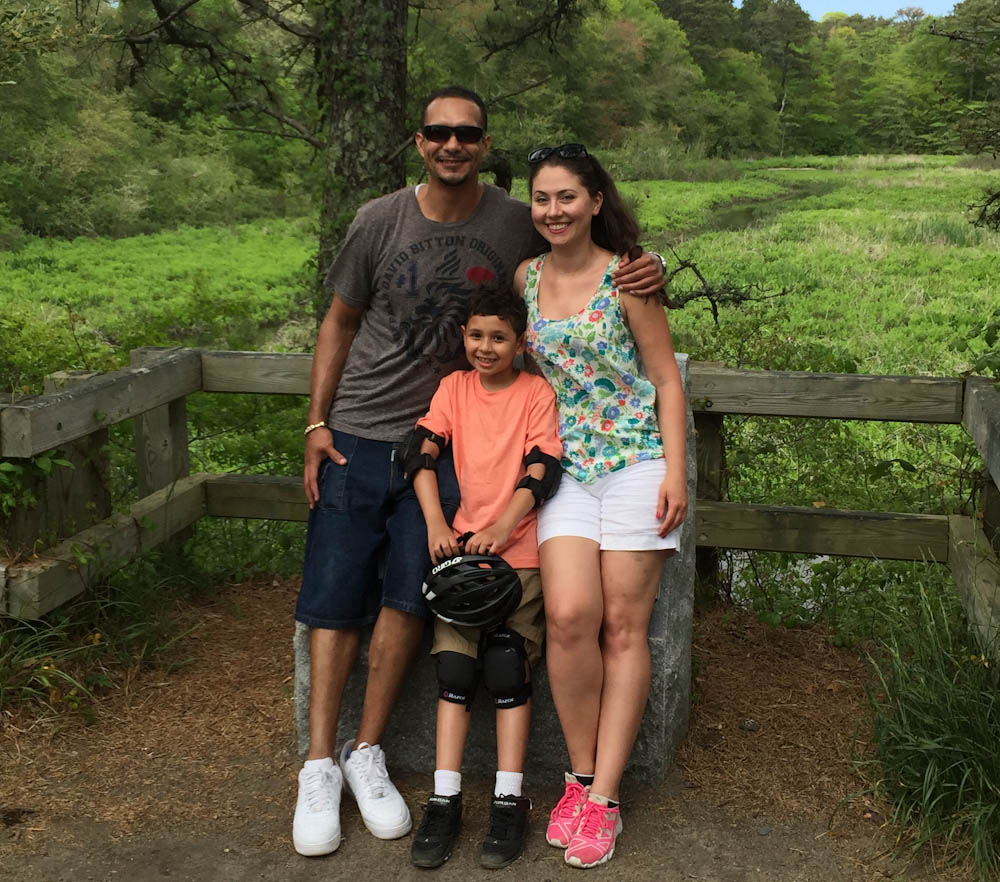By Carl Nickerson
Recently I was getting out of my car in front of a Latin restaurant when a man stopped me. I had been interviewed a few days before during the WEEI-NESN Jimmy Fund Radio-Telethon about my experience with testicular cancer, and featured in Boston’s Latino newspaper, El Mundo, about the importance of testicular self-exams. “Thank you for the information,” said the man, a Latino like myself. “My doctor never told me anything about that.”
Lately I have been hearing this a lot, because I have made it my mission to educate other men of color about how to check themselves for testicular cancer.

It all goes back to a physical I had when I was 18. The doctor explained all the potential medical conditions you should check for on and around your testicles, including testicular cancer. It was the first time I heard about testicular self-exams, and I never forgot his advice.
I have always led an active lifestyle — playing basketball, weightlifting, snowboarding, and sailing. Last year, at age 38, I started experiencing a lack of energy and fatigue and didn’t know why. Then, during a self-exam, I found a hard bump on my right testicle and knew something was wrong.
After an ultrasound and some blood work, doctors confirmed I had testicular cancer on July 2, 2014. Three weeks later, my surgeon, Dr. Steven Chang, removed my right testicle at Dana-Farber/Brigham and Women’s Cancer Center. Because I had found it early, the cancer had not spread.
Read more:
I was evaluated in August to see if I needed to start chemotherapy. The day of my first appointment at Dana-Farber, I did more blood work and went up and met my oncologist, Dr. Christopher Sweeney, for the first time. When Dr. Sweeney looked at my blood work he told me my cancer markers were down, and I had the option to pass on chemotherapy. Instead, doctors would monitor the cancer with blood tests and scans every few months.
My father was diagnosed with colon cancer in 2008, and I saw what he went through with chemotherapy, so I decided to put it in God’s hands and continue monitoring. My last screening was done on November 20, 2014, and showed that I am now pretty much cancer-free. Due to the nature of this cancer, I need monitoring for two years; so far, things look good.

When my father had cancer, the news never left the family. After I decided not to do the chemo, for a few days I couldn’t sleep. I kept thinking how I didn’t want to be like my father and live the rest of my life with nobody knowing beyond my family.
Then I realized that maybe part of the reason I was being saved from going through chemo was because I had a purpose I had not fulfilled yet. I needed to be there to show someone else what that doctor had showed me back when I was 18. If it were not for him, I may not have found my cancer early.
I want all guys, and all single mothers with boys, to know that this is something that is hitting blacks, Latinos, and other minority men like me really hard. There is this machismo with Latino men, and even if they feel like something is wrong, they don’t want to deal with it for fear of being emasculated. I want to break that wall down and raise awareness. Any time I get around a large group of men, whether on the basketball court or in the barbershop, I talk about it.
That focus on education is also part of my professional goals. I am training to become a financial planner, and aim to help men of color become more economically conscious as well as health-conscious. It may be a large task to spread awareness in this community of men, but my father always said: The mountain doesn’t come to you, you have to go to the mountain – and when you get there you have to take it one step at a time.

Hi Carl. I enjoyed the article.
I’m a 5 year survivor of TC. Unfortunately, mine spread to my abdomen. Three cycles of chemotherapy, an RPLND, and the folks at Dana Farber cured me.
All the best,
Albert